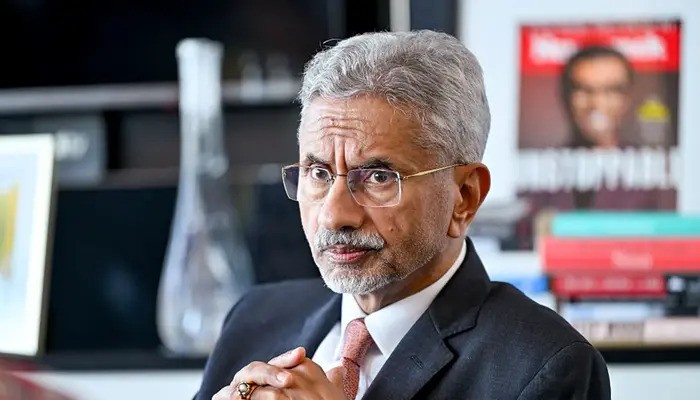India-U.S. trade talks are still ongoing, but tensions are rising as Washington prepares to impose hefty additional tariffs on Indian goods. Indian Foreign Minister Subrahmanyam Jaishankar confirmed that negotiations remain active, though he emphasized that New Delhi has clear redlines it will defend. The looming tariffs, set to take effect within days, threaten to disrupt one of the world’s largest bilateral trading relationships.
Tariffs Set to Escalate
Indian exports are already facing a 25% tariff from the United States. Another 25% will be added from August 27, pushing total duties to as high as 50%. These levels would place Indian goods among the most heavily taxed imports in Washington’s trade policy.
The U.S. decision stems from India’s increased purchases of Russian oil, which Washington views as undermining its sanctions strategy. India, however, has defended its stance by citing national interest and the need to secure affordable energy supplies.
Canceled Visit Deepens Concerns
Initially, U.S. negotiators had planned to visit New Delhi between August 25 and 29. That trip was expected to provide space for compromise and possibly delay the tariffs. However, the visit was called off, dashing hopes of a last-minute deal.
Without face-to-face talks, analysts fear the chances of averting the tariff escalation have sharply decreased. This raises pressure on both governments as the deadline approaches.
Jaishankar’s Firm Stand
Speaking at an Economic Times forum in New Delhi, Jaishankar underlined India’s priorities. He made clear that while New Delhi seeks constructive dialogue, it will not compromise on the interests of its farmers and small producers.
“We have some redlines in the negotiations, to be maintained and defended,” he said. His remarks highlighted that agriculture and dairy remain highly sensitive areas in Indian trade policy.
Earlier this year, bilateral trade negotiations collapsed because Washington demanded greater access to India’s vast agricultural and dairy markets. New Delhi refused, arguing that such steps would damage the livelihoods of millions of small farmers.
The Scale of Trade Relations
The stakes are high. India and the United States conduct trade worth more than $190 billion annually. As the world’s largest and fifth-largest economies, their partnership covers goods, services, technology, and investment.
A breakdown in trade ties would not only hurt exporters but could also ripple across global supply chains. India has positioned itself as an emerging manufacturing hub, and punitive tariffs could weaken that role.
Read: Powell signals possible shift as Fed weighs interest rate cuts
Economic Risks of Tariffs
According to analysts at Capital Economics, the new tariffs could shave 0.8 percentage points off India’s economic growth in both 2025 and 2026. The impact would be immediate in sectors like textiles, chemicals, and machinery, where the U.S. is a major buyer.
“The longer-term harm could be even greater as a high tariff could puncture India’s appeal as a global manufacturing hub,” analysts warned. Companies weighing supply chain diversification might reconsider India if U.S. market access becomes costlier.
Criticism of U.S. Policy
Jaishankar also commented on the broader nature of U.S. trade policy. He described President Donald Trump’s announcements as “unusual” in their style and timing. Unlike past U.S. leaders, Trump has conducted much of his foreign policy openly and in real time.
“We have not had a U.S. president who conducts his foreign policy so publicly as the current one. It is a departure from the traditional way of conducting business with the world,” Jaishankar observed.
This new approach, he implied, complicates diplomatic engagement and creates unpredictability for partners like India.
The Russian Oil Factor
Washington’s central concern remains India’s rising imports of Russian oil. However, Jaishankar pointed out what he saw as double standards. He noted that other major buyers, such as China and the European Union, continue large-scale trade with Russia without facing similar tariff threats.
“If the argument is oil, then there are (other) big buyers. If the argument is who is trading more with Russia, then there are bigger traders,” he said. He emphasized that Russia’s trade with Europe is far greater than with India.
According to him, India’s energy decisions are rooted in securing affordable supplies for its population and not in geopolitical calculations. He also stressed that the issue of Russian oil had not been raised in earlier trade talks with Washington, making the sudden tariff announcement even more surprising.
A Crossroads for Trade Relations
With only days left before the next tariff hike, India and the United States find themselves at a crossroads. Both sides insist that dialogue continues, but the lack of direct meetings raises doubts about reaching a compromise in time.
For India, defending national interest and protecting vulnerable sectors remain paramount. For the United States, curbing Russian oil revenues and maintaining leverage over partners are key goals.
The outcome of the standoff could shape not just bilateral trade but also global perceptions of India’s role in supply chains. Whether compromise or confrontation defines the next phase of India-U.S. trade talks will soon become clear as the deadline approaches.
Follow us on Instagram, YouTube, Facebook,, X and TikTok for latest updates
